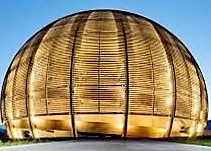Speaker
Description
The plasma density, temperature and pressure in laser-induced deuterium-tritium (DT) inertial fusion implosions at the National Ignition Facility (NIF) are comparable to those in the center of stars. Neutrons are produced within a radius of $\approx$50 $\mu$m and a time of $\approx$100 ps, representing a uniquely high neutron density approaching 10$^{22}$ cm$^{-3}$, close to that of the astrophysical $r$ process, and fluxes of 10$^{31}$ cm$^{-2}$s$^{-1}$ [1]. Recent experiments at NIF first passed the burning-plasma threshold [2,3], where self-heating exceeded the external heating applied to the fuel and produced record fusion yields of $\approx$1 MJ . In a dedicated NIF high-power laser shot, we plan to investigate neutron-induced reactions on $^{40}$Ar incorporated in the capsule gas. The choice of Ar as probe of such reactions is motivated by the chemical inertness of noble gas Ar allowing for reliable collection of Ar isotopic reaction products and by the existence of three convenient neighboring isotopes $^{39}$Ar ($t_{1/2}=$ 268 y), $^{41}$Ar (110 min) and $^{42}$Ar (33 y). The $^{40}$Ar($n,2n)^{39}$Ar reaction is a direct monitor of the fast-neutron flux; the $^{40}$Ar$(n,\gamma)^{41}$Ar and a potential $^{40}$Ar$(2n,\gamma)^{42}$Ar capture reactions are sensitive to energy downgraded neutrons. A search for $^{42}$Ar may provide an indication of the feasibility to study the important astrophysical $^{58}$Fe$(2n,\gamma)^{60}$Fe reaction [4] in the laboratory. The long-lived $^{39}$Ar and $^{42}$Ar nuclides are detected and counted by Noble-Gas Accelerator Mass Spectrometry (NOGAMS) at Argonne National Laboratory. We report here on a separate first measurement of the total yield of the $^{40}$Ar$(n,2n)^{39}$Ar reaction in a 14 MeV neutron activation. The neutron activation was performed with the DT neutron generator of Technical University Dresden located at Helmholtz-Zentrum Dresden-Rossendorf. First direct ultra-sensitive detection of the $^{42}$Ar nuclide by NOGAMS in a $^{40}$Ar sample activated by the slow double-neutron capture reaction $^{40}$Ar$(n,\gamma)^{41}$Ar$(n,\gamma)^{42}$Ar is demonstrated. The latter activation (8 days) was performed at the high-flux nuclear reactor of Institut Laue-Langevin (Grenoble, France). Preliminary results of these experiments, which will help calibrate the $^{40}$Ar activation at NIF, are presented.
Support from the Pazy Foundation (Israel) and USA-Israel Binational Science Foundation is gratefully acknowledged. This work was supported by the U.S. Department of Energy, Office of Nuclear Physics, under Contract No. DE-AC02-06CH11357. This research used resources of ANL’s ATLAS facility, which is a DOE Office of Science User Facility.
[1] Ch. J. Cerjan et al., J. Phys. G Nucl. Part. Phys. 45, 033003 (2018).
[2] A. B. Zylstra et al., Nature 93, 542 (2022).
[3] A. L. Kritcher et al., Nature Phys. 18, 251 (2022).
[4] W. Wang et al., Astrophys. J. 889, 169 (2020).
